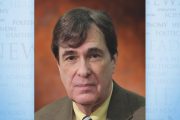In our previous article, we related how Amanda Ripley, author of The Smartest Kids in the World and How They Got That Way, discovered the secret behind Finland’s ability to produce the world’s smartest kids: they were taught by the smartest teachers on the planet. And because Finnish teachers have developed independent intelligence, they have more freedom in their classrooms.
Ripley discovered that Finnish teachers do not use poverty as an excuse for any student not being able to do well academically. In the United States, however, Diane Ravitch, a highly respected educational historian, told a cheering crowd of teachers, “Our problem is poverty, not schools.” The teachers cheered because they were being absolved of their failure to teach poor kids to read. It was not their fault. It was the fault of the kids. That is the kind of self-deception that permeates the American education system.
A colleague of mine in Texas has been tutoring reading-disabled kids very successfully for years with Alpha-Phonics. He has had 100 percent success. But when teachers ask him for the secret of his success, he tells them. But none of them ever adopt Alpha-Phonics for their own classes. They simply lack the independence or intelligence needed to go against the system of planned failure.
Ripley relates the story of a veteran teacher in Washington, D.C., who was really concerned about the poverty of her fourth-grade students and the inability of their parents to raise them properly. She writes:
She’d felt genuinely sorry for her students, but what good had come from her sympathy? After a year in her class, her students were farther below grade level in reading than they’d been when they’d first met her. They’d performed worse than other low-income kids who’d started the year at the same level in the very same city. Yet, she’d seemed oddly sanguine about those results. The diversity narrative explained everything, even when it didn’t.
That poor teacher had never learned how to teach a child to read. She obviously had never read Why Johnny Can’t Read or any other critique of the whole-word method, and she lacked the simple intellectual curiosity to find out whether she was doing something wrong. In other words, ignorant teachers simply do not know how to produce high academic achievement. Yet the system permits these teachers to produce failure year after year with no apparent objection from anyone.
Ripley had discovered that in the top performing countries, “People thought learning was so important that only the most educated, high-achieving citizens could be allowed to do the teaching…. Highly educated teachers also chose material that was more rigorous, and they had the fluency to teach it…. They were accountable for the results, but autonomous in their methods.”
This also meant that the students had much more freedom. Since the work was rigorous, failure was not unexpected. But such students were young enough to learn how to finally master the subject matter.
The situation in South Korea was unique. There the high PISA scores were due to the students’ strong aspiration to excel. Ripley writes: “Korean kids gorged themselves on studying, because they wanted to get into one of the country’s top universities.” To do so, they had to supplement their public school education with the private after-school academies known as “hagwons.” That’s where real education took place. According to Ripley:
In a survey of 6,600 students in 116 high schools, Korean students gave their hagwon teachers higher scores across the board: hagwon teachers were better prepared, more devoted to teaching, and more respectful of students’ opinions, they said. The hagwon teachers did best of all, students said, when it came to treating all students fairly regardless of their academic performance.
In other words, the private sector was able to provide educational services the public schools could not. And the PISA scores indicated that it was the quality of after-school private tutoring that made the difference. Indeed, the hagwon chains have become a booming sector of the Korean economy and some even have been listed on the Korean stock exchange. In 2011, Korean parents spent $18 billion on these after-school tutoring academies. One hagwon teacher of English was in so much demand that he began publishing his own textbooks and became a millionaire.
In addition, the hagwon teacher was a free agent, with none of the special benefits given to public school teachers. He was not even certified. This was profit-making free enterprise in its purest form, producing superior results in, of all things, education.
Can such a system work in America? We have always had excellent private schools for the elite. But most American parents cannot afford private schools. Thus, the development of the Charter School, a public school freed of the unions and regulations of the normal public schools. But the teachers in the Charter Schools in general come from the same pool of teachers produced by our colleges of education.
It is in the homeschool movement that we see a new radical form of education in America that reinforces family life and produces students who do very well on standardized tests. In 1999, educational researcher Eric Rudner analyzed the test scores of over 20,000 American homeschooled students and found them to be “exceptionally high — the median scores were typically in the 70th to 80th percentile.” However, they represent a very small percentage of the U.S. population.
But the successful homeschool phenomenon does not address the question of how public education can be improved in America. The Finnish model cannot be replicated as long as our progressive educators are determined to keep dumbing down America’s teachers. The private hagwons of Korea could become a model for America provided there were enough parents willing to pay for them and enough free-enterprise teachers willing to set up such academies.
The third country that intrigued Amanda Ripley was Poland, which was high on the list of great performing schools. Tom from Pennsylvania had chosen Poland as an exchange student because, as a voracious reader, he believed that people there would be able to discuss great European literature. He could not speak Polish, but he could still observe how education was conducted in that country.
Related articles:
Who Are the World’s Smartest Kids? Not Americans




